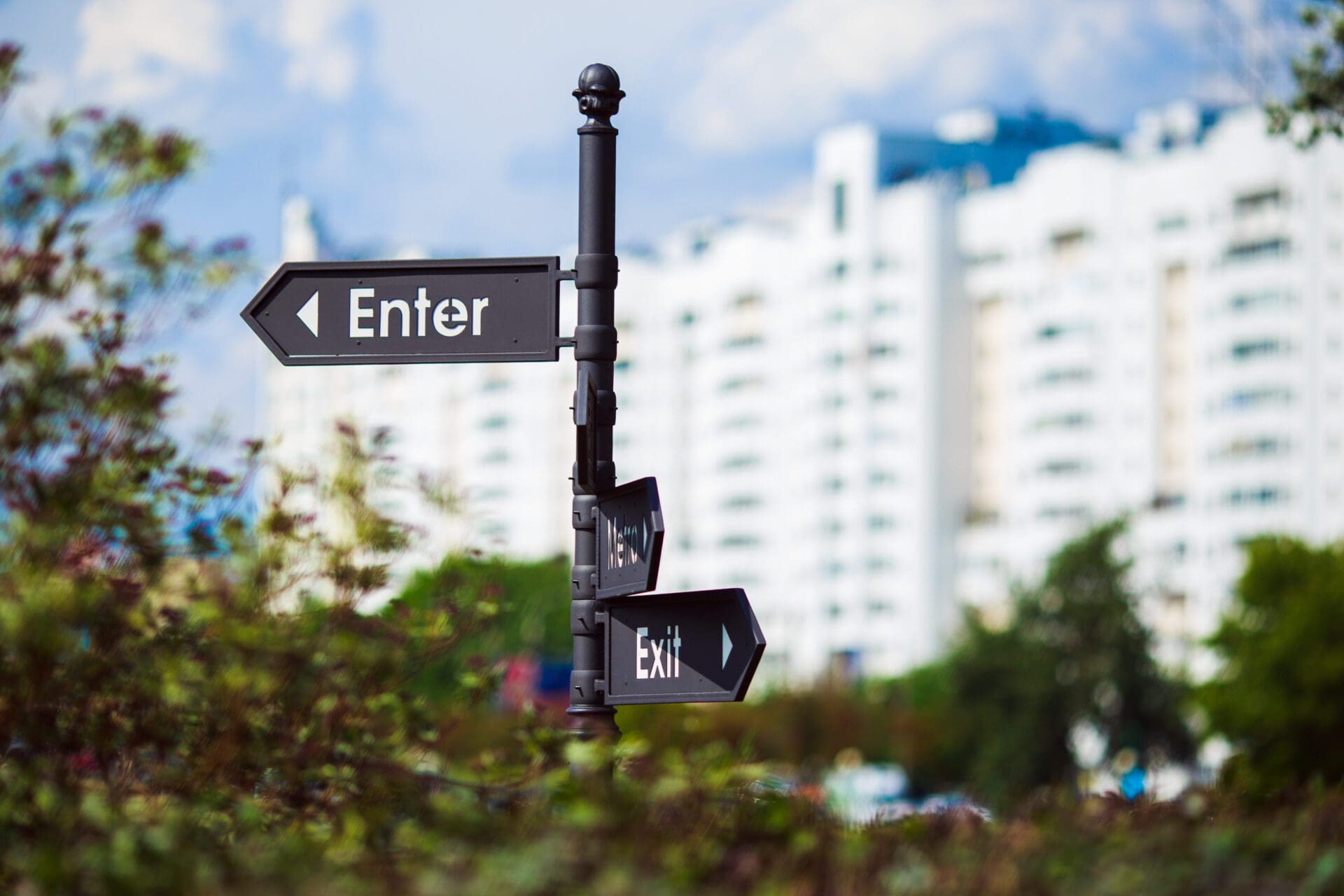Factors to Consider for Wayfinding Signage

When it comes to signs, wayfinding systems are a key element to helping customers. It provides key information that allows them to navigate your space and answers questions such as where the restrooms are located, where the exit is, and room numbers. Need signage for your commercial space? Let’s discuss what to consider when choosing wayfinding signage for your business.
Contact Identity Group today to learn how we can help you with your signage needs.
Types of Wayfinding Signs
Before we discuss the factors, let’s breakdown the four types of wayfinding signs:
- Directional – These signs help someone find their way through directional arrows to key points such as a lobby or where the elevator is located.
- Identification – This helps someone know that they’ve arrived at the right location such as a hotel room number.
- Informational – These signs give information about your business such as the hours of operation and entrance or exit signs.
- Regulatory – These are designed to inform people about your business and its rules such as no smoking and whether or not pets are allowed.
ADA Requirements
When it comes to determining the design elements of your commercial signage, you must follow the Department of Justice’s ADA standards. Established in 2010, chapter 7 states various rules for signage including:
- Characters should all be uppercase.
- Raised characters must be 1/32 inch (0.8mm) minimum above their background.
- Characters must be sans serif font and not be italics, oblique, script, highly decorative, or other unusual forms.
- Characters and their background should have a non-glare finish and contrast with their background with either light characters on a dark background or dark characters on a light background.
It’s also important to remember that all signs need to contain braille or tactical letters to help individuals with visual impairments navigate your reach by touch. This means that signs must easily be within their reach.
Maintain Consistency
As you decide on the materials for your signage, keep in mind that simple is best. This allows all of your signage to be consistent and gives recognizable visual cues to anyone who may be new to your space. This also helps them develop a cognitive pattern that reinforces the intuitive aspect of wayfinding.
Avoid Clustering
When placing your signage, it’s important that it prevents any confusion from occurring. They should create efficient pathways without being overwhelming. For example, at an entryway, it should have clear directional signage that shows where things are located like the lobby entrance or the direction that the offices are in. Be sure to avoid text that is too small and use directional arrows that customers can follow to the next sign.
Choose Identity Group for Your Commercial Signage
The wayfinding signage you choose should accurately reflect your goals for someone navigating your space and your brand’s identity. We can help you with that.
Here at Identity Group, we specialize in all things signage, and you can think of us as your single-source solution for high-quality design and decor elements.
Contact us today to learn more about our services!
